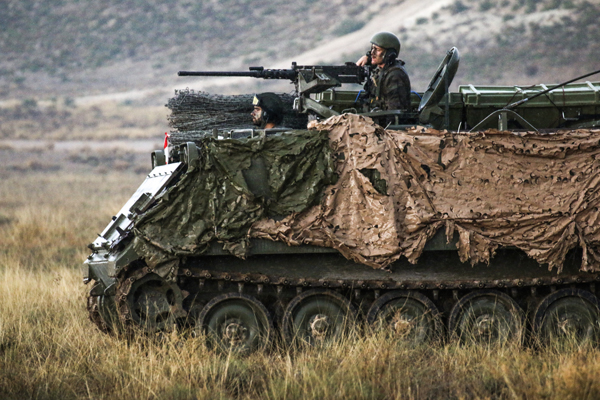- Home
- Feature Articles
- El Ejército avanza en su plan de modernización de los Transporte Oruga Acorazado
Upgrading tracked APCs
Wednesday, January 22, 2020
Number: 93
The Army is making progress with its plans to modernise the tracked APCs (Armoured Personnel Carriers), a piece of equipment which is enjoying a new life thanks to the transformation of existing models into new ones, allowing them to respond to the operative needs of the units.
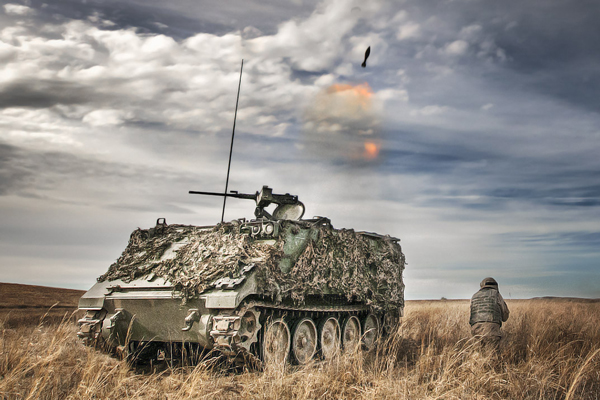
The transformation and modernisation of tracked vehicles is something which the Army has been working on for years. Although the arrival of new equipment, such as the 8×8, is ever-closer, the ‘veteran’ vehicles continue to play an important role in the day to day activities of the units, hence the search for ways to keep them useful.
In the case of tracked APCs– which are, along with wheeled Armoured Personnel Carriers, the vehicles under consideration as part of the Army’s Equipment Modernisation Plan – the first result of this transformation were the tracked APCs with tactical loads (Tierra no. 235).
Born of the modifications introduced to the tracked APCs M-1113 AI personnel carriers, they are the result of work carried out by the engineers and technicians from the 2nd Park and Centre for Maintenance of Armoured Systems, which is responsible for the design and execution of the prototype and the evaluation tests which are carried out by the ‘Lepanto’ Battalion from the 2nd ‘Queen’ Regiment. The almost 70 units that were planned for modernisation have already left the production line and are now in service.
To these are added other models which are now ready or are in the preparation process:
Sappers Combat Vehicle
Vehicles have changed since the M113 A2 Milan tracked APCs. The Sappers’ tracked APC has been developed to give engineering units a transport element like that of the units which they support, so that the Sappers can accompany these units. As well as the crew – the driver/operator of shovels and instruments and the shooter – it is able to transport a squad of Sappers with their required equipment.
The seven units which were planned to be transformed before 2020 in the 2nd Park and Centre for Maintenance of Armoured Systems, have now been distributed throughout the Sapper Battalions in the 1st, 10th, 11th and 12th Brigades and in the 1st Battalion from the 1st Engineer Regiment.
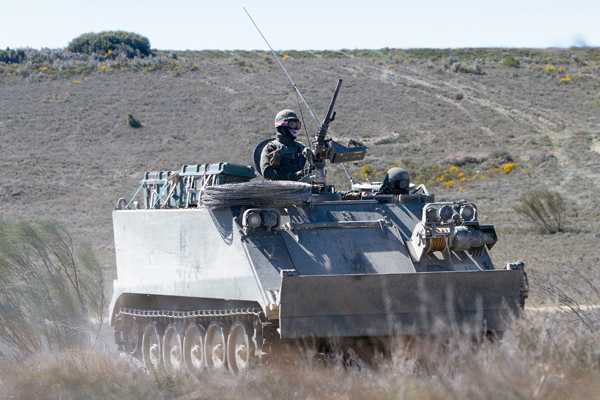
SPIKE Missile Launcher vehicles
This version is based on the MILAN M113 A2 anti-tank tracked APC. It will allow for the provision of an anti-tank team with the Spike anti-tank missile – the same as the anti-tank defence systems which are used by the Spanish Armed Forces – to move to the firing position and shoot.
The shot can either be executed from the vehicle, or by disembarking and taking down the launcher to execute the shot from outside the vehicle using the missile’s normal gun carriage (which is different to the one carried by the vehicle).
At the moment, only a prototype exists, which was submitted for acceptance testing and shooting tests with the 31st ‘Asturias’ Regiment from the 12th ‘Guadarrama’ Brigade, and then evaluated by the 10th ‘Guzmán el Bueno’ Brigade. Once the prototype has been validated, the plan is to convert roughly another 60 vehicles.
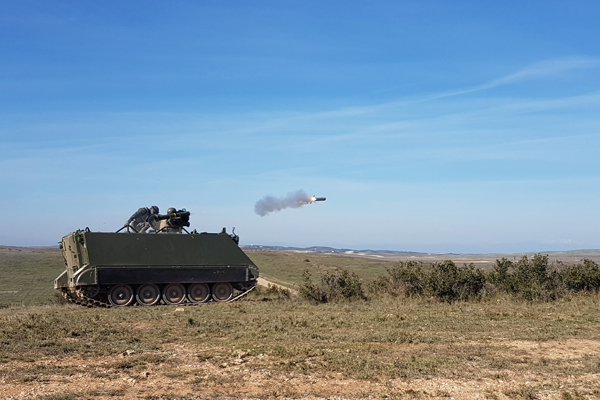
LAG-40
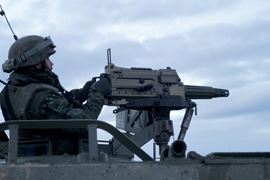
The tracked APC LAG-40 is another vehicle which is currently in service. The aim is to add more units by transforming the MILAN M113 A2 tracked APCs into this model. To do so, the exterior support of the MILAN’s gun carriage is removed and replaced by a multi-purpose support/gun carriage, where the grenade launcher is installed. Currently, the required changes have been made in three out of the seven units which are to receive the upgrades.
Ambulance
This version is based on the current MILAN M113 A2 tracked APC and can transport a Medical Evacuation Team plus two injured people with mobility and protection capacities which are similar to those of other vehicles.
The highlight of this transformation is that the interior has been lined with the same kind of thermal insulating paint as is used in NASA’s space shuttles.
The 25 ambulances have now left Segovia for postings with the 10th and 11th Sappers Battalions and various Infantry and Calvary Regiments.
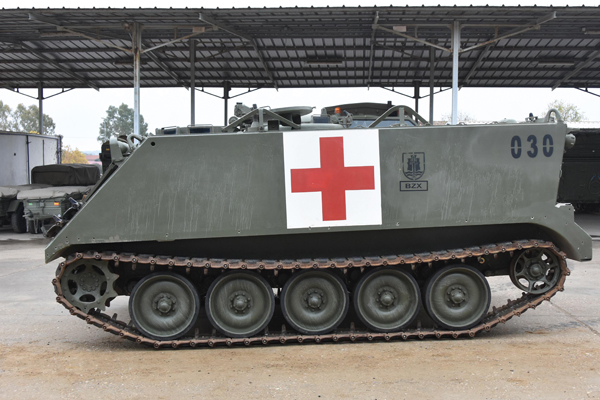
ARMY UNITS
- Araba Álava |
- Albacete |
- Alicante |
- Almería |
- Asturias |
- Ávila |
- Badajoz |
- Barcelona |
- Burgos |
- Cáceres |
- Cádiz |
- Cantabria |
- Castellón |
- Ceuta |
- Ciudad Real |
- Córdoba |
- A Coruña |
- Cuenca |
- Girona |
- Granada |
- Guadalajara |
- Gipuzkoa |
- Huelva |
- Huesca |
- Islas Baleares |
- Jaén |
- León |
- Lleida |
- Lugo |
- Madrid |
- Málaga |
- Melilla |
- Murcia |
- Navarra |
- Ourense |
- Palencia |
- Las Palmas |
- Pontevedra |
- La Rioja |
- Salamanca |
- Segovia |
- Sevilla |
- Soria |
- Tarragona |
- Santa Cruz de Tenerife |
- Teruel |
- Toledo |
- Valencia |
- Valladolid |
- Bizkaia |
- Zamora |
- Zaragoza



